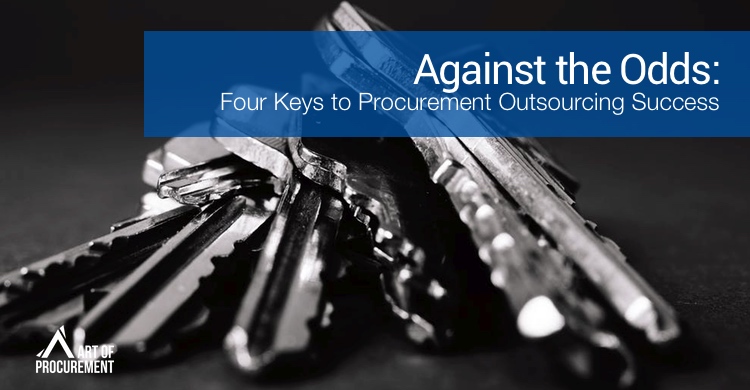
I was passing the time waiting for the burgers to grill on July 4th when I came across this depressing stat in my Twitter timeline courtesy of Phil Fersht at HfS Research.
The spreading outsourcing disease: barely a third of buyers see real value in their current provider relations https://t.co/jCSHukKIjL
— Horses for Sources (@hfsbloggers) July 5, 2017
Only 3 out of the 60 sophisticated outsourcing buyers polled stated that they have a true partner in their service provider, one who is proactively innovating to help them unlock new sources of value. On the flip side, 24 of the 60 claimed that their outsourcing supplier constantly disappoints them or provides no value other than access to cheap labor.
This got me thinking – is the picture any different when it comes to procurement outsourcing, specifically in the category management and sourcing space?
My experience as a buyer and supplier of strategic procurement outsourcing services suggests that the answer is no.
So, if you are considering engaging a firm to access their subject matter expertise and market intelligence, what can you do to increase your odds of achieving a fruitful partnership? Here are some pointers that come to mind:
Align KPIs with desired business outcomes: the success or failure of almost all strategic procurement outsourcing deals is defined by cost savings. This probably comes as no surprise, given that the CPO is measured that way too. However, while internal savings targets will be measured alongside other sources of value (or missed without serious consequences), your service provider has to hit that savings target at all costs. Their aggressive pursuit of savings may leave collateral damage that ultimately creates more harm than good – for them and the procurement team that brought them in house.
Don’t outsource stakeholder relationship management: the engagements that most often end in tears are those where the buyer, confident in their ability to hold the service provider’s feet to the fire in pursuit of a contractual savings target, washes their hands of any day to day support. The most successful relationships, on the other hand, are those where the buying organization and service provider take a team approach to stakeholder relationship and change management. You will be glad that you retained ownership of the relationships, should you ever bring the service back in house.
Flexibility is key – build optionality into your deals: the only certainty is that all things change. What you need from your service provider may look very different in 3 years, 2 years, or, heck, even in 90 days. If you must sign a long-term contract – i.e. anything over a couple of years in duration – then ensure you have optionality and downside protection built into the terms. As a buyer, I once inherited a 7-year multi-tower outsourcing deal with no downside protections. Two years into the deal, my company almost halved in size. The fallout damaged the buyer/supplier relationship beyond repair to the detriment of both sides.
Push your service provider to demonstrate innovation: how is your (potential) service provider innovating? Are they developing new delivery models or building emerging technologies into their service offerings? Are they innovating the offerings of existing clients, or just new customers? Or are they still delivering the same service that they delivered 3 years ago at a slightly more competitive price? Delivery model and technological innovations are redefining both the capabilities and efficiencies of strategic procurement services – you must ensure that you are not left behind.
Engaging specialist procurement services firms is a tried and tested approach to accessing subject matter expertise, particularly where it does not make economic sense to hire experts to support all categories.
How you structure your deal, and the flexibility and innovation capability of your chosen service provider, will have a material impact on whether your procurement organization delivers significant value beyond savings – or if you and your service provider are left to rue damaged relationships and lack of internal support once the aggressively pursued short term savings goals are met.




